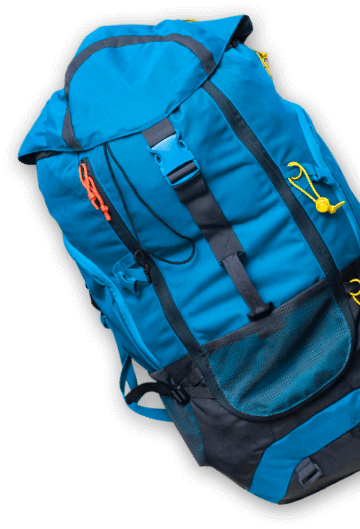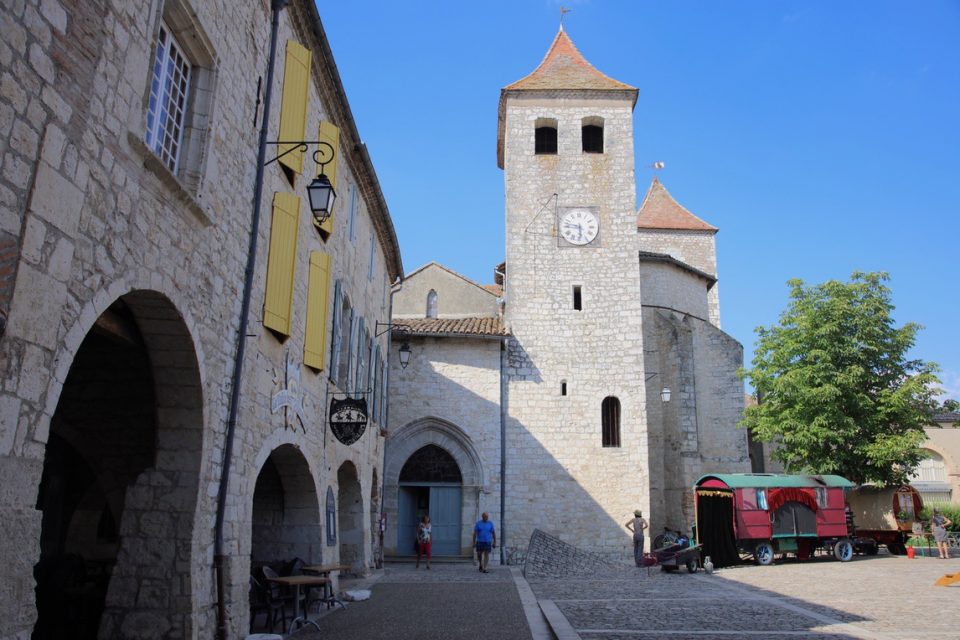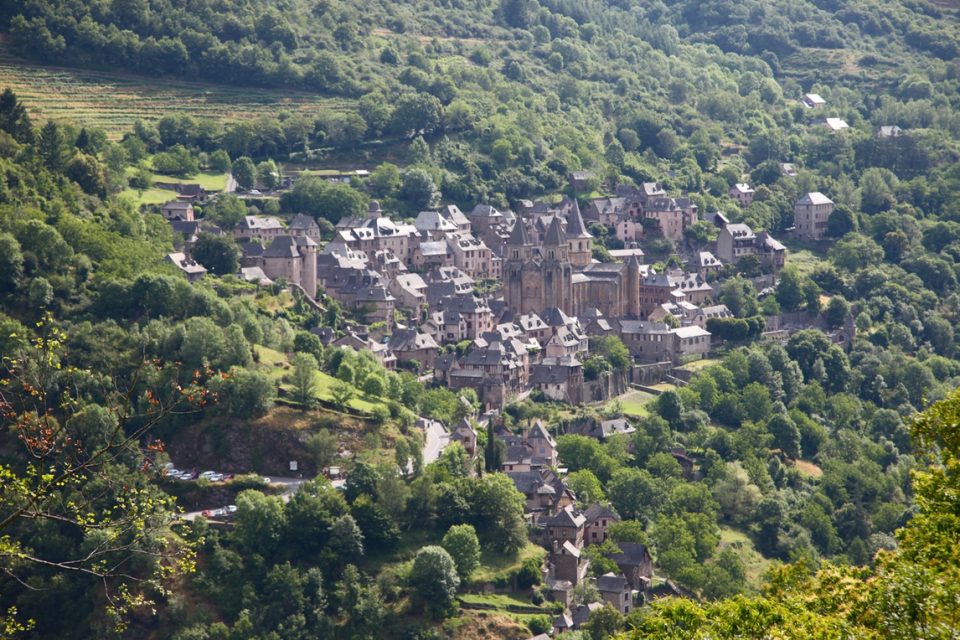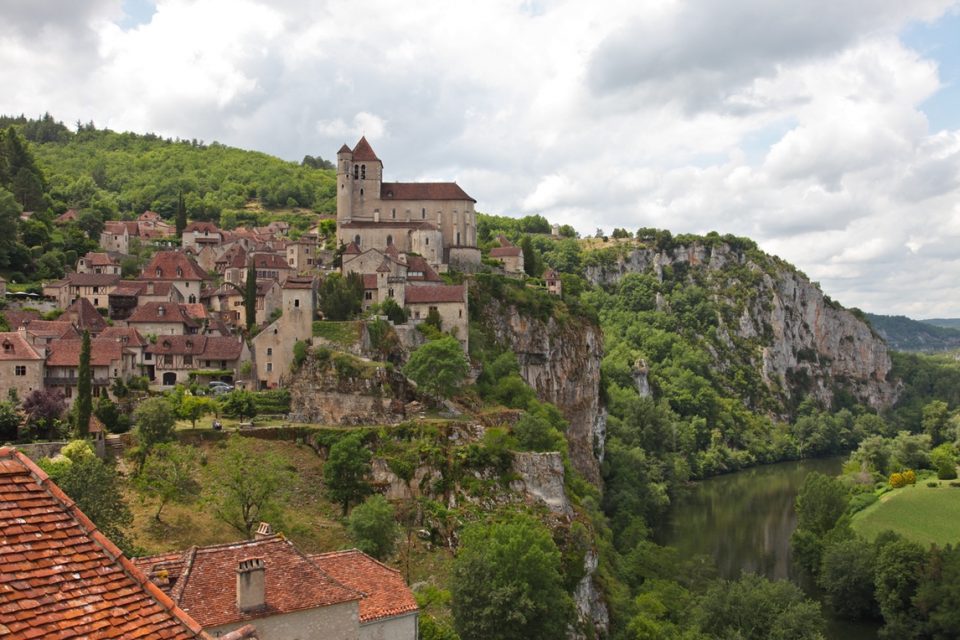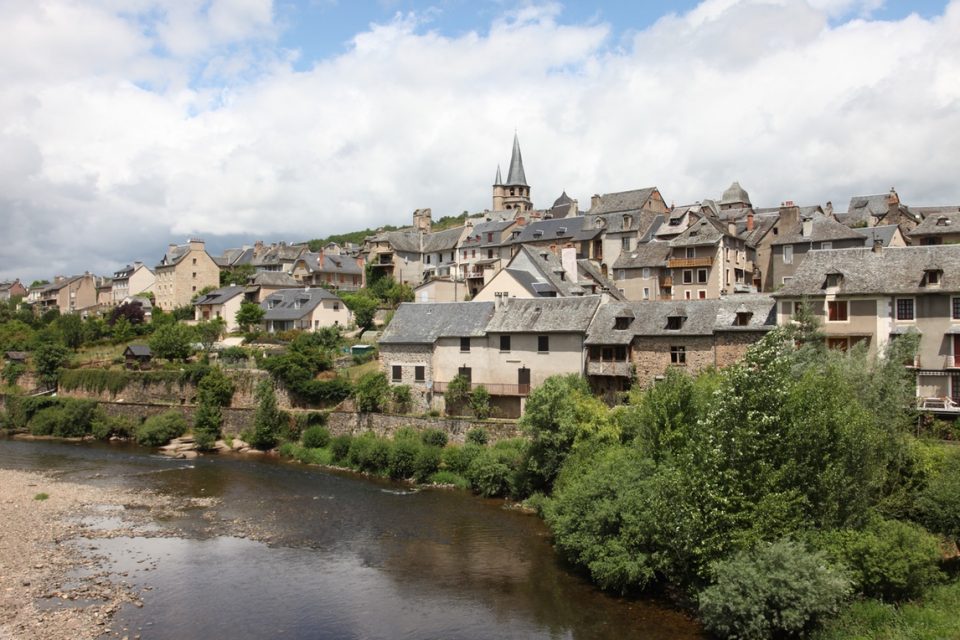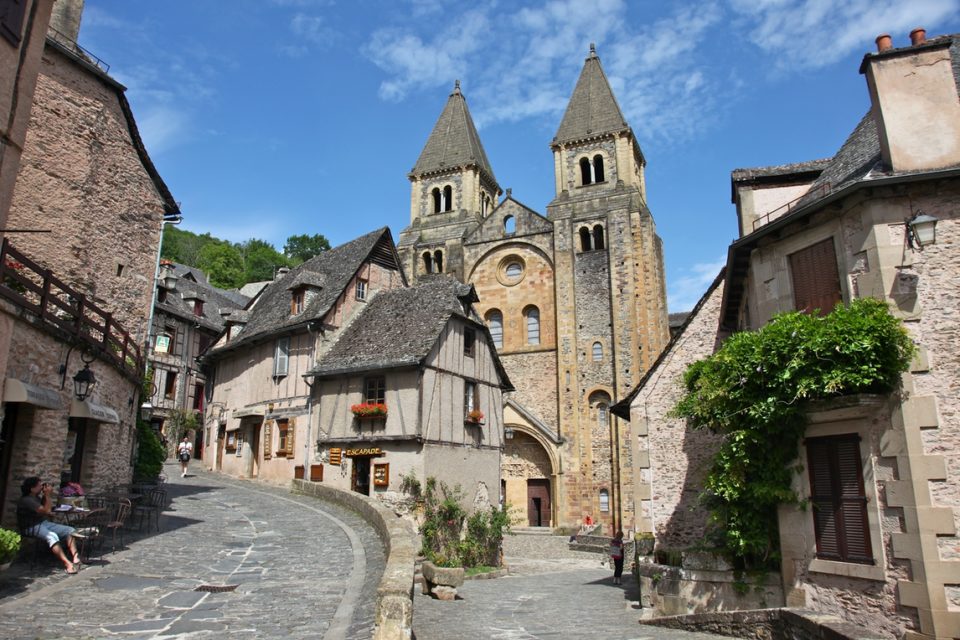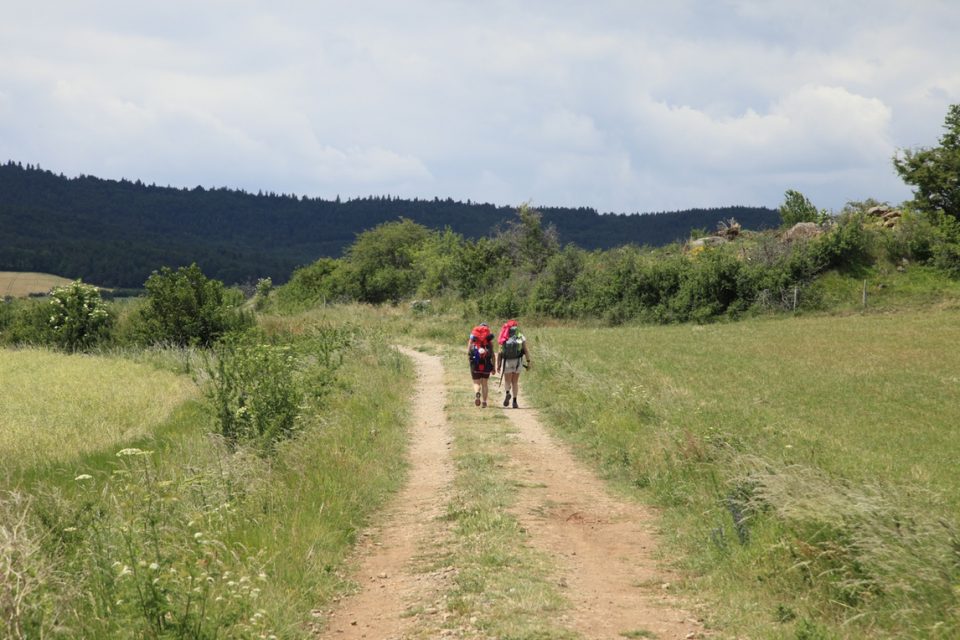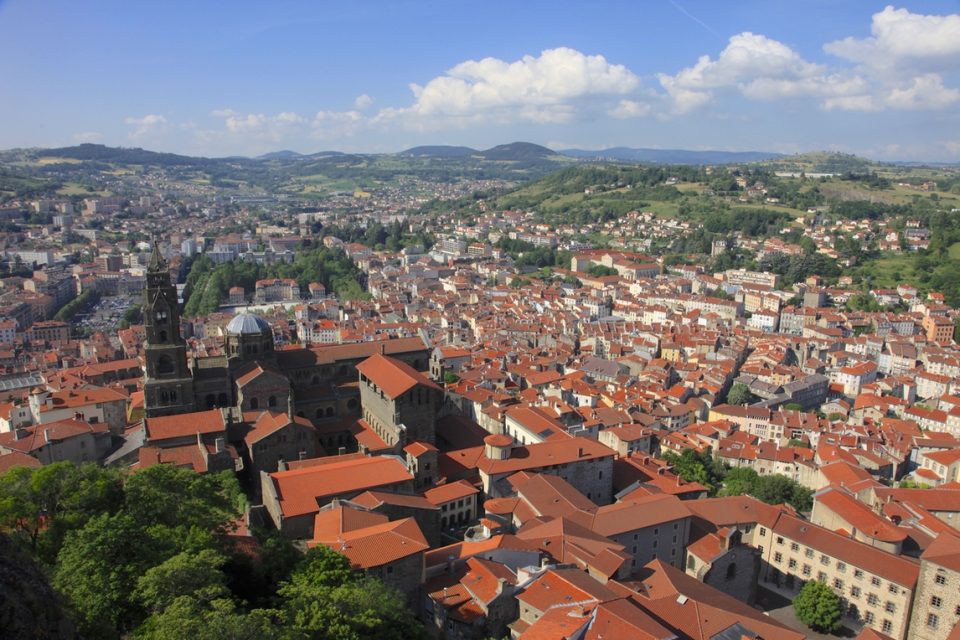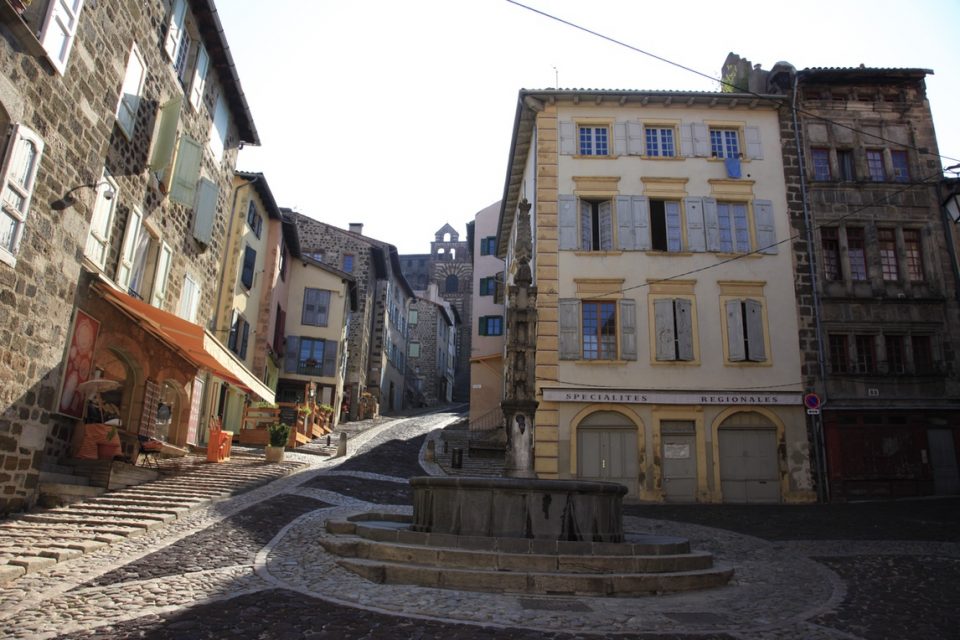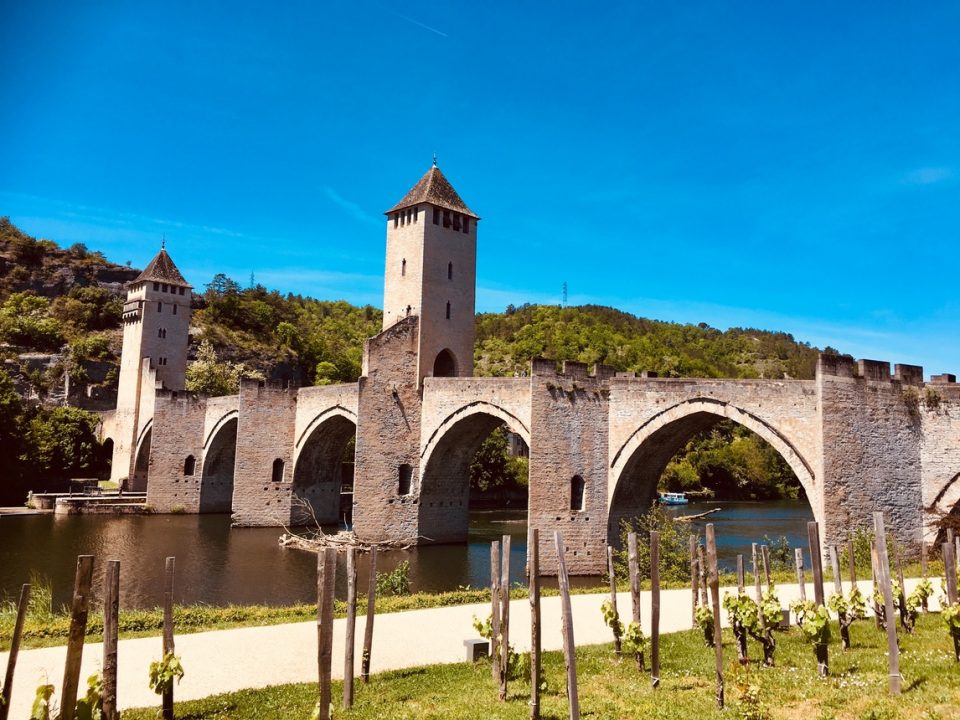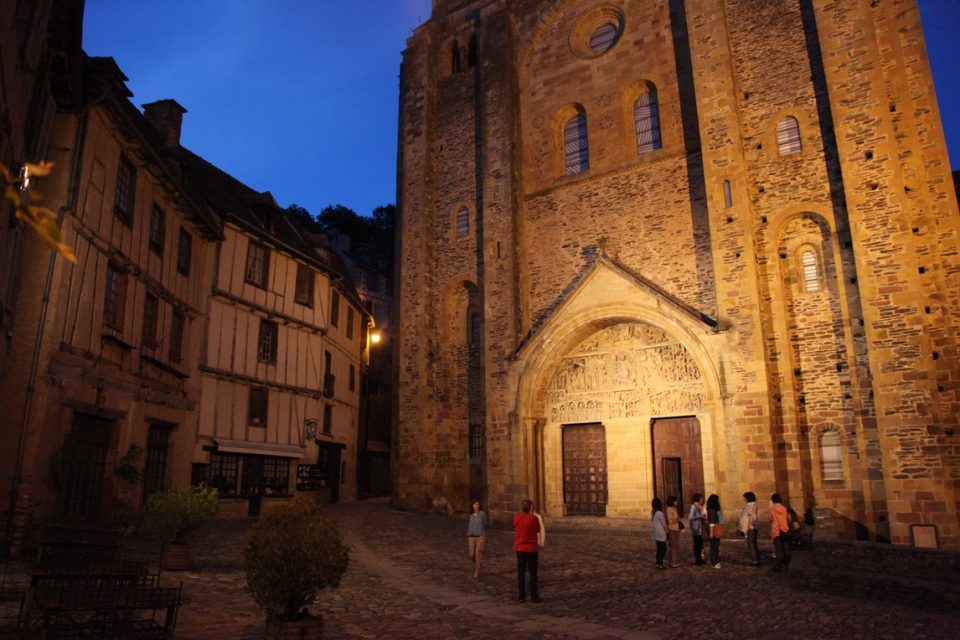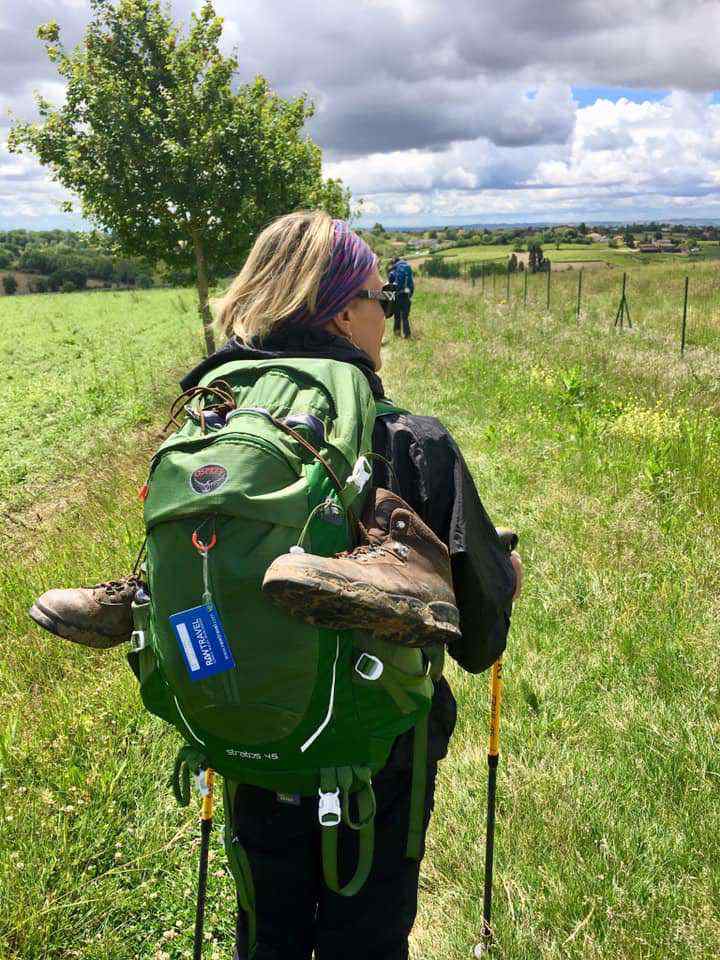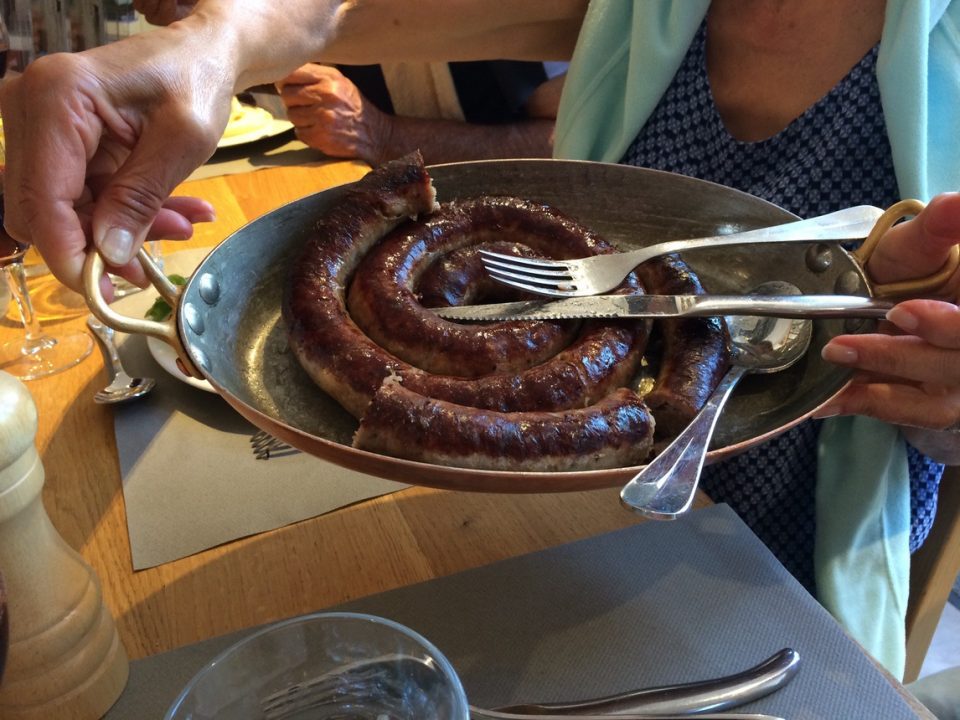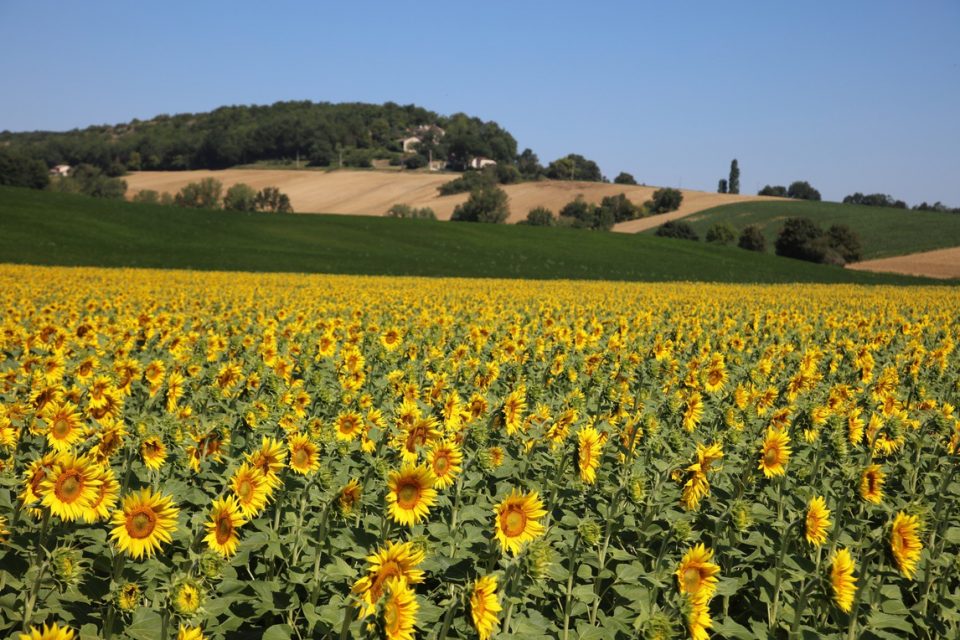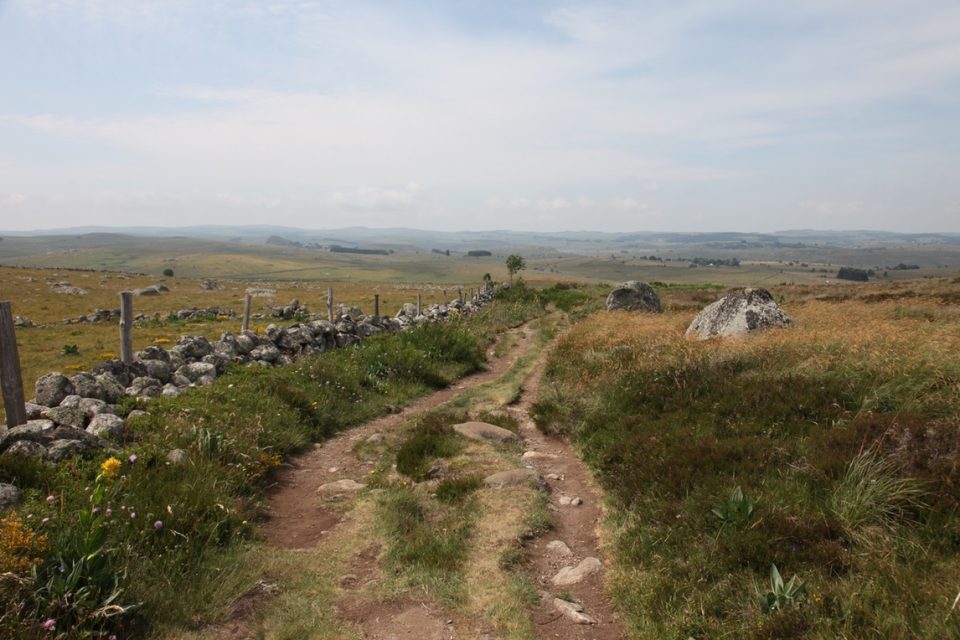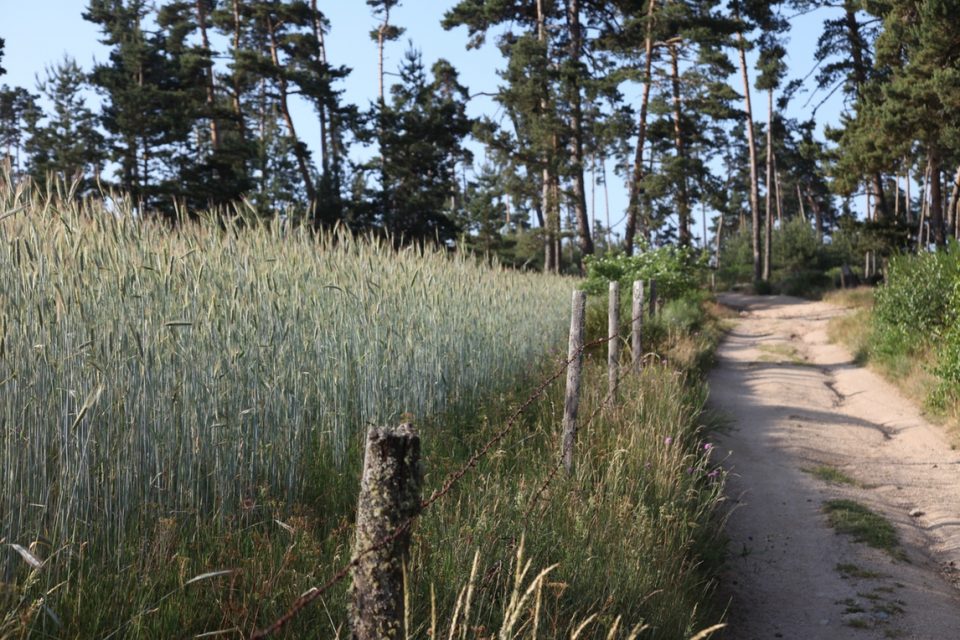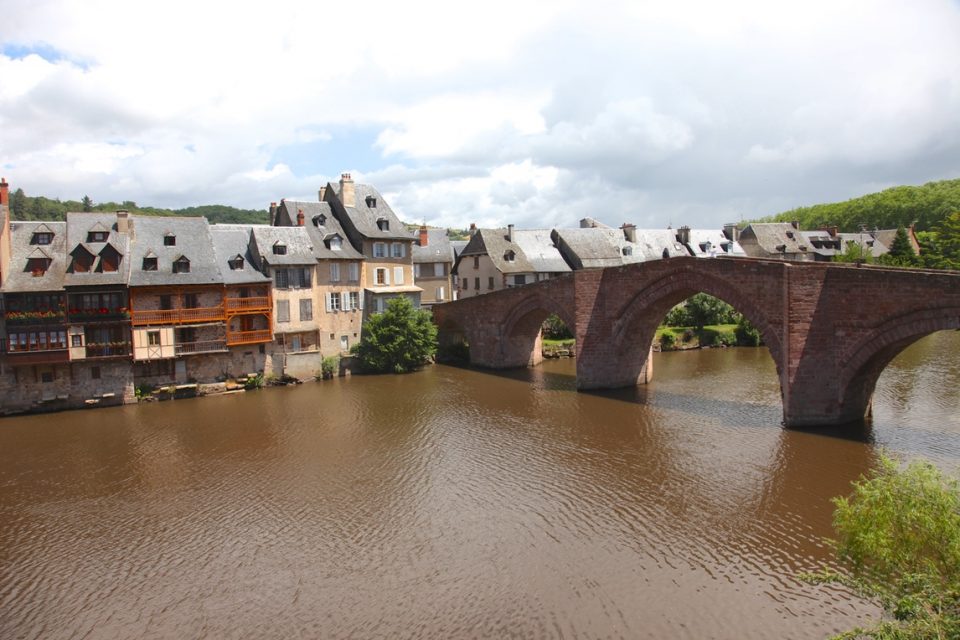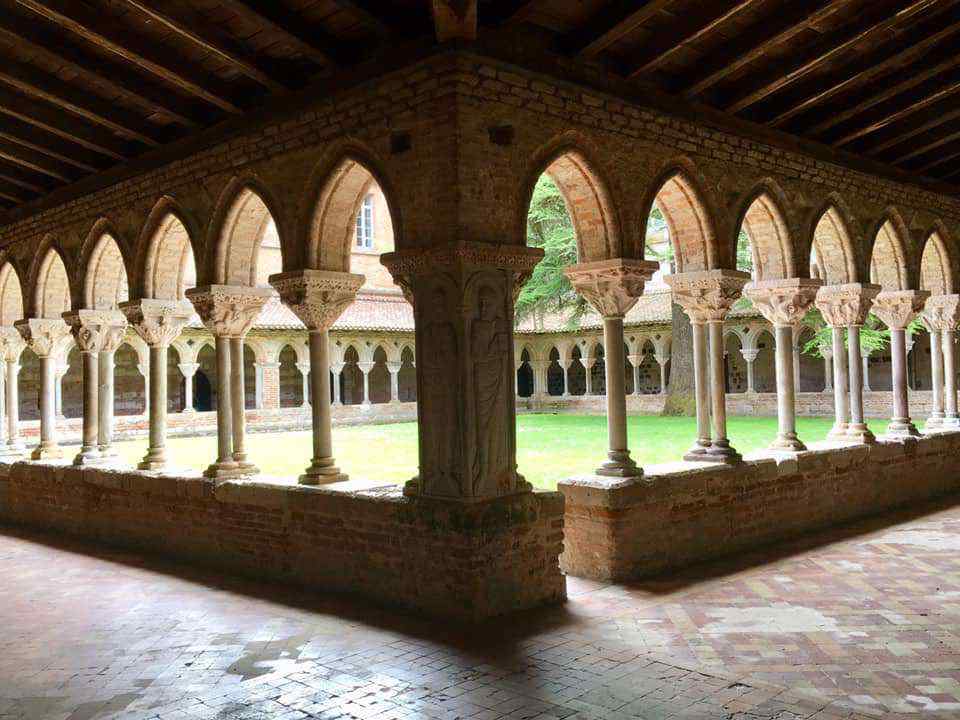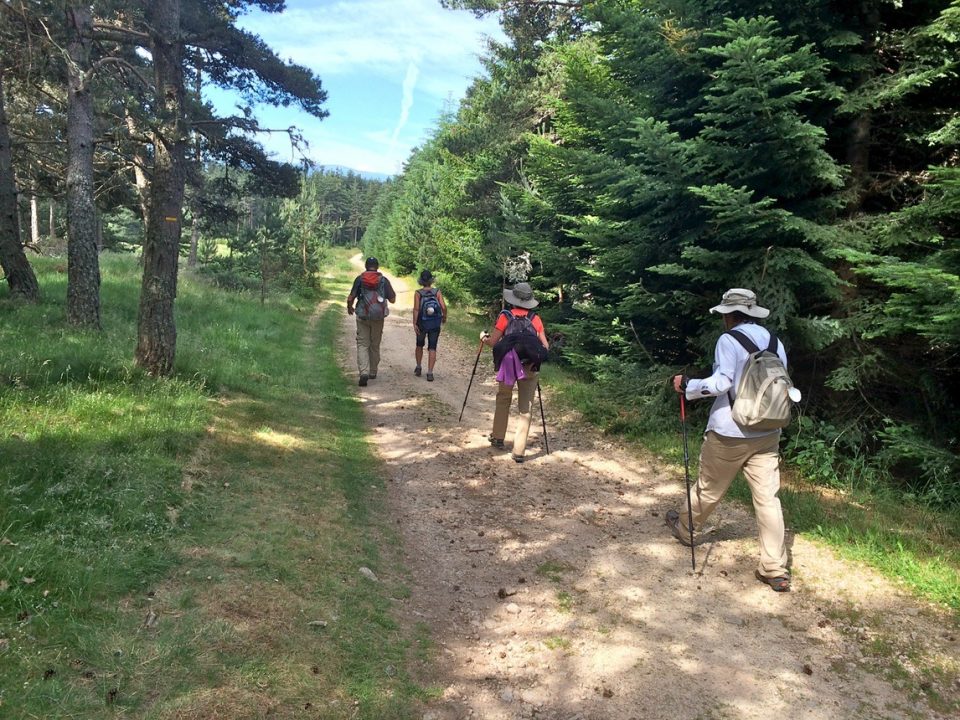length
40 Days
difficulty
Moderate - Challenging
trip cost
From $7695 pp
Nature Immersion
Cultural Interest
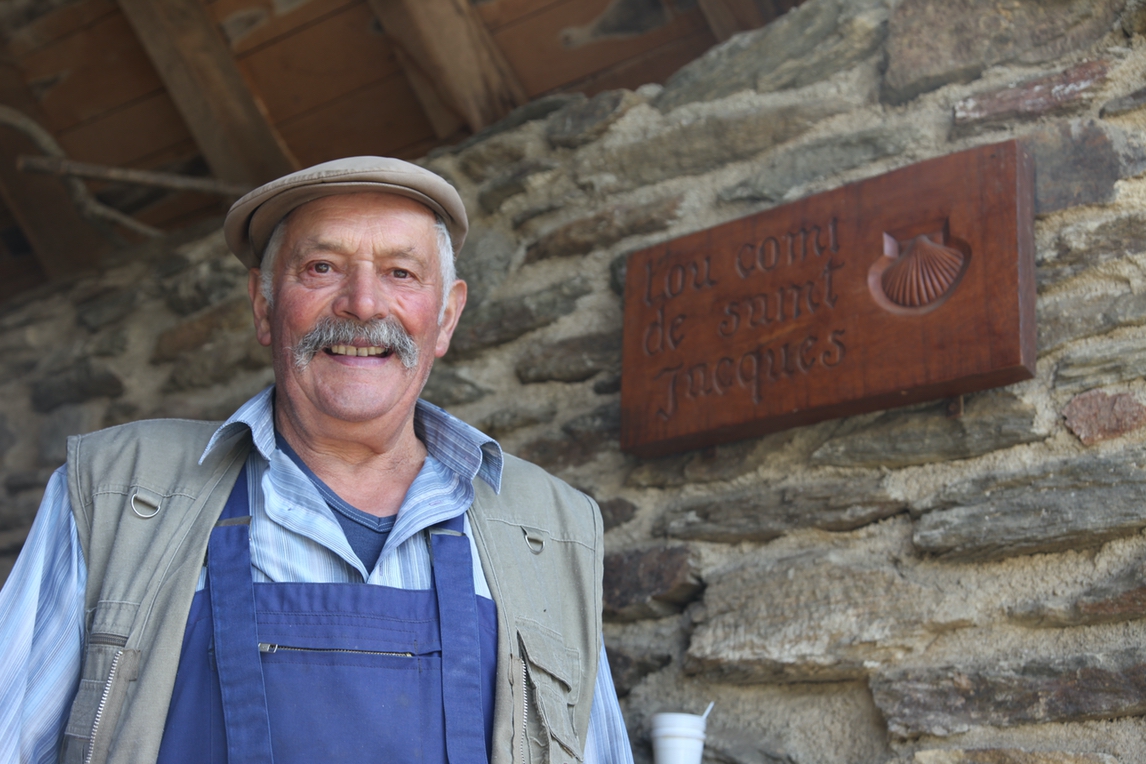
Highlights
Get Ready For
- Walk the full length of the most beautiful of all the Camino routes in Europe
- Explore 8 of the most beautiful villages in France
- Admire the impressive architecture and historic UNESCO world heritage sites
- Meander through stunning, ever-changing landscapes from rolling green hills and wooded mountains to moors of heather and limestone plateaus
- Soak up the rugged volcanic scenery of the Massif Central
- Cross the mythic and desolate Aubrac high plateau with its wildflowers and contentedly grazing cows
- Share trails and tales with friendly French walkers
- Immerse yourself in French history, architecture, art and food
Itinerary
DAILY DETAILS
Today you need to make your way to Le Puy-en-Velay on the upper reaches of the Loire and a pilgrimage centre since the Middle Ages. Internationally recognised as a starting point for the St James Way (the pilgrimage route to Santiago de Compostela), Le Puy-en-Velay enjoys a unique historical and architectural heritage that we recommend you spend time discovering before you start your journey.
Overnight: Le Puy-en-Velay
Le Puy was much visited during medieval times by pilgrims on their way to Santiago de Compostela and highly venerated for its Black Madonna statue. You can explore the historical and well-preserved old town with its maze of small cobbled streets, flanked by tall, pastel coloured houses. The charming streets, winding their way up to the UNESCO World Heritage listed cathedral, provide a great place to stop in one of the many restaurants where local specialities are served. Famed for centuries for its lace making, visitors can also see lace makers at work, keeping the old tradition alive.
Meals: B
The Cathedral Notre-Dame is the starting point for today’s walk. You may wish to attend the Pilgrims’ Mass, which is held in the cathedral every morning at 7 am. As you follow the trail up and out of town, enjoy great views over Le Puy and the surrounding area. Rural landscapes will now be your companion as you gently ascend and cross the volcanic soils of the Velay, past fields of the famous green lentils. You will pass by the first of many ancient stone crosses marking the way of the original pilgrimage route. Continue through the small village of Saint-Christophe and, just before Montbonnet, visit the small Chapel Saint Roch built from the local volcanic rock. Saint Roch (pronounced Rock) became the patron saint of pilgrims and this is the first of many chapels along the Camino that bear his name. The path then passes through the spruce forest of La Baraque, before a steep descent into the small village of St Privat d’Allier.
Overnight: St Privat d’Allier
Meals: B
The first part of today is spent crossing the valley of the River Allier, starting with a level walk to Rochegude, famous for its ancient St Jacques Chapel and tower (the remnants of an old 13th-century castle). The path descends steeply along a spruce lined, stony footpath towards Monistrol d’Allier with its stone buildings set in the valley below the volcanic cliffs. Walking out of town over the iron bridge designed by Gustave Eiffel, you encounter a sustained ascent that continues to a water fountain at Montaure where easy walking across an agrarian and forest plateau takes you to Saugues, the meeting point for pilgrims coming from the Auvergne region. This town features in the history of the Hundred Years War and as a marshalling point for hunters of the legendary Beast of Gevaudan, which terrorised this region in the mid-1700s.
Overnight: Sauges
Meals: B
On leaving Saugues, a large, wooden statue of Saint James points the way to open farmland and the hamlet of La Clauze, with its remnant tower of the 100 years war perched alone on a large granite rock. A picturesque walk takes you across the Margeride Plateau with grassy plains, moors of broom and heather and conifer woods. After the past two days, you will find this section relatively easy going, gently ascending most of the day. Continue through forests and around a huge estate called Le Sauvage with its massive solid stone barns and courtyard. Here you leave the Department of Haute-Loire and enter that of the Lozere. On the way you pass the Fountain St-Roch and rest stop, followed by the St-Roch Chapel founded in 1198 as a hospital for pilgrims and travellers. After the chapel, the track commences a gentle descent into Les Faux and your accommodation for the night.
Overnight: Les Faux
Meals: B
You will continue on a downhill ascent today towards Saint-Alban-sur-Limagnole with its grey slate roofed stone houses laid out neatly along the slope of the hill. From here you continue to traverse the vast plain of the Margeride toward Aumont-Aubrac, also known as ‘Terre de Peyre’ (land of stone). This stage follows the same pattern as yesterday; beautiful rolling landscapes following mostly along comfortable earthen tracks between forests and fields. A short steep climb takes you up to Grazieres-Mages before descending to the hamlet of Les Estrets through quiet woods and farmland, then gently ascending to Aumont-Aubrac, a pleasant market town. Part of the route here follows the ancient Roman Agrippa Way. Gateway to the mythic Aubrac high plateau, Aumont-Aubrac has always had strong links to the Camino. Back in medieval times, this is where pilgrims coming from the East on the Le Puy route rested before tackling the upcoming bleak and isolated lands of the Aubrac.
Overnight: Aumont-Aubrac
Meals: B
From Aumont-Aubrac the trail passes through groves of pines before reaching the endless pasture lands of the vast volcanic and granite Aubrac plateau that is dotted with traditional stone shepherd’s huts called burons. Pass through the village of La Chaze to the tiny Chapel de Bastide, with its 16th-century ceiling mural, and then through the village of Labros where you start to cross the Aubrac. This is a desolate region of wildflowers and contentedly grazing Aubrac cows. It is largely treeless and empty of people. You will observe the vast stretches of dry stone walls and drailles (old drove roads), originally built for the summer ‘transhumance’, where cattle were returned to summer pastures of the Aubrac after the long cold winter. The trail takes you through tiny hamlets and farmsteads, crossing streams over ancient granite bridges to arrive at Nasbinals, a herding village that marks the beginning of the Aveyron region.
Overnight: Nasbinals
Meals: B
This stage of the walk takes you through the heart of the Aubrac plateau and the entire route has been classified as a UNESCO World Heritage Site. The Aubrac plateau has a tough reputation; cold, windy, remote and originally country for wolves and bandits. This can be an exhilarating day, much of it on open grassy hillsides and passing beech forests, dry stone walls of the drailles and ascending to 1368m – the highest point of the Le Puy Camino. The trail then delivers you downhill to the historic centre of Aubrac, another transhumance centre. In Aubrac you can see remnants of an ancient domerie (the name given to the hospital in Aubrac in medieval times). The domerie also provided a rescue service; lost travellers were summoned by an evening bell and horsemen scoured the surrounding district to escort wanderers to safety. After Aubrac you drop steeply past the ruins of Knights Templar Belvezet castle to pretty St-Chely-d’Aubrac in its secluded valley.
Overnight: St-Chely-d’Aubrac
Meals: B
Today is a rest day, so you can explore the village of Saint-Chely-d’Aubrac at your leisure. The Tower, built in the 15th century, belonged to the congregation ‘Chaplains of Cuisine’ until its purchase by the surgeon of Saint-Chely after the Revolution (now private property). The Place de la Mairie was, until the 1920s, a space occupied by a block bounded by two streets. To the left of the hospice, inaugurated in 1927 to house the elderly and sick, there is a wrought iron cross of the 19th century. The early 15th-century church is steeped in history and the old bridge, called ‘Bridge of Pilgrims’ was formerly known as the street of weavers. Today is yours to explore, relax and reflect.
Overnight: St Chely-d’Aubrac
Meals: B
Descending the cobbled streets of St-Chely-d’Albrac, you cross the Boralde River on the old stone UNESCO World Heritage listed Pont des Pelerins – built by 12th-century bridge-building friars, whose mission was to help pilgrims make their way towards Compostela. Leave the country of the ‘Boraldes’ on an ascending road and trail before descending to the Lot valley. Your path passes along beech-clad slopes and then descends through chestnut woods to cross a few little bridges to ascend suddenly to the hamlet of La Roziere. There is a little more undulation until finally you descend to St-Come-d’Olt, the first of the “Les plus beaux villages de France” (most beautiful villages in France), with its medieval gateways, old quarter and famous twisted church spire. You continue along a ridge above the Lot valley with some short steep ascents and descents towards Espalion. As you walk into Espalion the 16th century Veiux Palace and 11th century Pont Veiux arched bridge connecting the ancient tanner’s houses lining the river come into view. The bridge and church of Espalion are listed as UNESCO World Heritage Sites. High above the town are the ruins of the 10th century Chateau de Calmont d’Olt.
Overnight: Espalion
Meals: B
Continuing on the Way of St James, you follow the UNESCO World Heritage listed trail along the Lot river, then climb upwards to the beautiful Romanesque church of Bessuéjouls, one of the oldest along the route with an 11th-century chapel in the bell tower.
After Tredou, cross a mosaic of rich red soils, and green fields alternating with more forests of oak and old chestnut trees, before passing through the village of Verrieres. A narrow footpath then winds up and over a forested spur of a gorge, and a small section of road-walking leads to the village of Estaing; an impossibly beautiful picture-postcard village with its imposing 15th-century Chateau of the Estaing family rising above the old houses. The Church of Saint-Fleuret in the centre of Estaing is important to pilgrims because the relics of St-Fleuret within. The annual St- Fleuret fair has been held here since the 14th century, when a great procession travels through the village in period costume.
Leaving Estaing, you start winding your way through beautiful villages to the tiny hilltop village of Golinhac. With commanding views over the countryside, Golinhac is known for its church, which preserves the Roman foundations of a Benedictine priory, and an original stone cross with a small-sculpted pilgrim erected on it – a replica greets you at the entrance of the village.
Overnight: Golinhac
Meals: B
Today’s walk is a favourite amongst pilgrims. It is a hilly rollercoaster but otherwise easy walk across wonderful countryside and peaceful woodlands as you leave the Lot valley towards the famous village of Conques. You pass through the tranquil village of Espeyrac, perched on a rocky promontory on the side of the valley, then Senergues, with its 14th-century square tower castle. Undulating trails lead you to a final dramatic descent into Conques, one of the finest hill-towns in France and a perfect example of a medieval village. The view over the village is breathtaking with its lauze stone-roofed cottages and dominating towers of the Romanesque Abbey Church Sainte Foy.
Overnight: Conques
Meals: B
After tearing yourself away from the charming village of Conques, it’s a steep climb to the chapel of Sainte-Foy and upwards to the surrounding hills where the view over the village of Conques is striking. The trail leads to the hamlet of Noailhac followed by the small chapel dedicated to Saint Roch, rejoining the GR6 before the steady descent through forests, fields and dairy farms to the town of Decazeville. You continue through Decazeville and cross the Lot next to the buttress remains of the old suspension bridge built at the beginning of the 19th century.
Overnight: Decazeville
Meals: B
Leaving Decazeville, a steady climb on quiet country lanes leads you to the hilltop village of Montredon, dominated by its church Saint Michel and Romanesque Chapel of Saint Mary. The route then crosses beautiful countryside to arrive in Figeac. A medieval town founded in 830 AD around its Benedictine abbey, Figeac became a thriving city in the 13th century thanks to agriculture and commerce. Now with a population of almost 10,000, it contains a substantial and interesting medieval historical centre, dating in part from as far back as the 9th century. It is the birthplace of Champollion, (decipherer of the Egyptian hieroglyphs), and you can visit the Champollion
museum. On the ‘Place des Ecritures’ there is a giant copy of the Rosetta stone.
Overnight: Figeac
Meals: B
It’s a long hike today as you leave the Aveyron region for Le Lot, one of the few remaining unspoilt regions of France. The route crosses the Cele River before ascending the limestone plateau offering fantastic views. You will pass dolmens (old tombs constructed of large stone slabs used as funerary chambers and altars by the people who preceded the Celts), small stone shepherd huts unique to the region, and dry stone walls. You will walk through the smart little village of Faycelles, and then skirt Beduer where the imposing Chateau de Beduer has stood guard over the Cele valley for 800 years. Finally arriving in Cajarc, you can see part of the original 13th-century castle in the main street, The Boulevard du Tour de Ville, which today forms a ring road around the town, once a moat that provided additional protection to the heavily fortified village.
Overnight: Cajarc
Meals: B
From Cajarc the Camino leaves the lush greenery of the Lot and crosses the Parc Regional des Causses du Quercy, a relatively arid plateau where rainwater seeping through the limestone has created a landscape of deep valleys, underground rivers, caves and depressions. In the past, pilgrims dreaded crossing the Causses, no dwellings, very little water and ground conducive to the attacks of bandits who roamed the region. The pilgrims would group themselves and reach Cahors in one go, more than 60km in one day. A little different to today with a shorter walk to Limogne-en-Quercy allowing time to absorb the ancestral heritage of the area. Limogne-en-Quercy is famous for its truffle fair, usually held on Sunday mornings from December to March and summer. Take the opportunity to savour this most celebrated delicacy.
Overnight: Limogne-en-Quercy
Meals: B
Another great walk today through the isolation of the Causses. A level trail takes you through woods of scrubby oak trees and low bushes passing by abandoned farms with few people between the towns. You are likely to see more dolmens, old windmills, wells, dry stone walls and a pretty monolithic cross, (carved from a single block). Pass by the village of Varaire and 1.5km after Bach you will be walking on the old ‘Cami Ferrat’, the originally paved ‘Iron Path’ Roman road constructed on the orders of Julius Caesar during the invasion of Gaul. Continue on to either Lalbenque for your evening stop.
Overnight: Lalbenque
Meals: B
Today will be similar to yesterday’s walk, although with some gradient changes and will be the last one in the Causses. The isolation of the past few days is temporarily lost as the shock of a brief return to civilisation is realised as the trail passes under the busy A20 motorway. From here it is a rollercoaster walk on various path and road surfaces toward Cahors. The forest is never far away as Julius Caesar wanted his troops to be able to move to the edge of the trees to take refuge if necessary. As you make your way on the final downhill, take in the great views of the medieval town of Cahors, the largest and one of the nicest towns on the Le Puy Camino.
Overnight: Cahors
Meals: B
Cahors is perhaps best known as the centre of the famous AOC ‘black wine’, referred to by many as the darkest in the world and known since the Middle Ages. The medieval town dates back to the 13th century and grew with the arrival of bankers and merchants. They built fine houses, usually of brick and often with arcades for their shops, good examples of which can still be found in the narrow streets. Located in the city centre with its two great domes and tall facade, the 11th century cathedral (Cathedrale Saint-Étienne), is Roman Catholic and a national monument of France. The famous 14th-century fortified Valentre bridge, an emblem of the city classified as World Heritage by UNESCO and a well-known pilgrim milestone, crosses the Lot on the west side of town. It has three towers each with large arched gateways due to its historical role as a defensive bridge during the Hundred Years War. Discover the legend of the pact that the bridge builder made with the devil. Cahors has become well known for its gardens and has in recent years, created some wonderful small gardens scattered throughout the town.
Overnight: Cahors
Meals: B
Finally departing the Lot Valley and also the Causses, the Camino now enters the Quercy Blanc, which takes you through the Garonne River plain with its green round hills. The earth here is mostly limestone, with a whitish colour, hence its name of Blanc. Your day starts with a short but steep climb up stone steps followed by a gentler walk on a stony lane uphill through a forest of pines to ‘Croix de Magne’, the Magne Cross. The rest of the day will then be following mostly flat and exposed trails. Enjoy long stretches of being alone with nature, an opportunity conducive to contemplation. You will pass various villages, chiefly Labastide-Marnhac and Lhospitalet before continuing along open uplands with occasional woods, before reaching the charming and prosperous little village of Lascabanes, once home to a 15th-century pilgrims’ hospital. Its an uphill walk out of Lascabanes to arrive at the lonely forest chapel of Saint Jean with its druid spring. The view as you approach the quaint medieval village of Montcuq is dominated by two towers, one of the church and the other the remains of a 12th-century castle.
Overnight: Montcuq
Meals: B
The journey today passes through the department of the Tarn-et-Garonne. After several days of quite flat walking, the trail now follows an undulating path through farmland, cultivated fields and orchards. Vegetation of small oaks along with dwarf maples dot the landscape. In spring, enjoy the rich flora, particularly with the many orchids. Look out for ancient raised dovecotes along the way. Arrive at one of the best preserved Bastides, (fortified town), the medieval town of Lauzerte, and the half way point from Le Puy to Saint-Jean- Pied-de- Port. Situated above the valleys and hills of the area and founded in the 12th century by the Count of Toulouse, Lauzerte is another of the ‘Most Beautiful Villages of France’.
Overnight: Lauzerte
Meals: B
The path today involves some steep paths together with lengthy stints on quiet roads. Approaching the Tarn valley, orchards of apples, plums, pears, peaches, kiwifruit and cherries replace the vineyards. Moissac, is situated at the confluence of the Garonne and Tarn rivers. Formerly a major pilgrim halt on the road to Santiago de Compostela and 2nd most important sacred site for the medieval pilgrims on this route after Conques, Moissac is famous for its Abbey Saint-Pierre. One of the most beautiful Romanesque buildings in France with its perfectly preserved Romanesque cloister, it is World Heritage listed by UNESCO. The cloister (an enclosed garden used by the medieval monastics for walking meditation and contemplation) dates back to 1100 and is reputably the oldest in the world.
Overnight: Moissac
Meals: B
Today you depart Moissac on the flat towpath of the canal of the Tarn and Garonne rivers. You will walk on quiet roads through productive orchards, vegetable gardens and fields before crossing the Garonne and walking uphill to the village of Auvillar, built on a promontory and classified as another of the ‘Most Beautiful Villages in France’. Auvillar, originally an ancient river-trading settlement from Gallo-Roman times until the 10th century, is another lovely town with cobbled streets and wooden framed arched buildings; it has a distinctive medieval feel. In the centre of town is the triangular market place with a unique circular corn market hall at its centre which was built in 1824. Also of interest is the clock tower and Church of Saint Peter.
Overnight: Auvillar
Meals: B
A short and easy walk today as you leave Le Lot department to enter the beautiful rolling farmlands of Le Gers. The Gers department is the heart of Gascony and the most rural area in France; an agricultural paradise of wheat, corn, grains and sunflowers. The Camino takes you to lovely villages such as Bardigues, Saint-Antoine and up to Flamarens where the ruins of the 12th-century castle are currently being restored. Cross through undulating countryside to arrive in the small town of Miradoux. Built on a small promontory, Miradoux is one of the oldest Bastide towns on the Camino with character filled stone houses and a fortified church. From Miradoux there is a slow descent across lush fields passing through the hamlet of Castet-Arrouy. The cathedral tower of Lectoure will come into view guiding you into this town sitting on a rocky promontory above the Gers River. Lectoure is an attractive historic walled town, with the impressive Cathedral of Saint Gervais and Saint Protais. Nearby is the ancient Fontaine Diane, a natural spring inside a little gothic building that at one stage provided the source of water for an active tannery industry in the town. Lectoure is known for growing one-third of all of the garlic in France, and in spring the surrounding slopes are covered with rows of rose-green garlic shoots.
Overnight: Lectoure
Meals: B
Leaving Lectoure and the Ger River behind, the trail takes you along quiet back roads to Marsolan, a tiny village on a steep hillside. Leave Marsolan through fields and woodland and after the chapel at Abrin the route goes northwards for La Romieu. This is not the historic route; pilgrims would in the past have headed directly for Condom. However, the imposing 14th century church at La Romieu, whose towers resemble a castle, is UNESCO World Heritage listed and the cloister with the delicate stonework of the arches is a must see.
Overnight: La Romieu
Meals: B
From La Romieu, the Camino rises and falls across this part of Gascony and you will enjoy expansive views over the countryside and, on a clear day, possibly see the Pyrenees far away in the distance. Pass through tiny Castelnau-sur l’Auvignon, before the old Romanesque chapel of Saint Germaine and a serene lake before the final stretch into the welcoming town of Condom.
Overnight: Condom
Meals: B
Today is a relatively short walking day so you can take your time, pace yourself and enjoy the scenery. This section of the Le Puy Way from Condom is full of history and interesting architecture. On route you will pass the Eglise de Routges, the oldest church in the region. Passing a castle you will arrive in Montréal-du-Gers, home to the biggest vineyard of Armagnac, the famous brandy.
Overnight: Montréal-du-Gers
Meals: B
Today you have another short walking day ahead but the trail has some nice and steep inclines alongside lush vineyards. The first 8km of the trail passes vineyards and pretty countryside until you reach the hamlet of Lamothe with its 13th-century guard tower. From here on the path is on a former railway line, guaranteeing good easy walking and providing a flat tunnel of greenery for the remaining 7km into Eauze. Eauze, a former Roman town, is the capital of the Armagnac region and offers one of the liveliest and biggest agricultural markets in the Gers.
Overnight: Eauze
Meals: B
Take a well-earned rest day in Eauze, a beautifully presented town with a fascinating history. Visit the Gothic Cathedral of Saint Luperc built in the 15th century from Roman rubble, destroyed during the Wars of Religion and rebuilt the 18th century. Don’t miss the Archaeological Museum with the only ancient Roman treasure in France kept in its entirety, including gold coins, jewellery and statues. Observe the numerous historic houses built of wood and brick or plaster, in a style reminiscent of English Tudor. Almost everything of interest in Eauze is on and around the main square, the Place d’Armagnac, where you can also visit the tourist office for a leaflet that explains the highlights in the village. Don’t forget to sample the Armagnac and duck and goose foie gras for which the area is famous.
Overnight: Eauze
Meals: B
Departing Eauze, the Camino passes through open countryside with fields of corn and sunflowers, and the many vineyards of Armagnac which have been a constant companion for the past several days. Arrive in the pretty town of Manciet in time for lunch where historically pilgrims coming from Auch met those walking from Le Puy. The route continues through the countryside with a few small ascents and descents. Look out for the Greenwich Meridian sign, where you will be zero degrees, zero minutes and zero seconds neither East nor West. Arrive in Nogaro, a busy but inauspicious service town. The town contains a bullring, a 12th-century Romanesque church and is also home of the Circuit Paul Armagnac, a purpose built motor race track opened in 1960. It was here that four-times Formula One world champion Frenchman Alain Prost started his career in 1974.
Overnight: Nogaro
Meals: B
Much of today’s walk will be on quiet country roads, initially with more ups and downs followed by a long and easy descent into Aire-sur- l’Adour. There will be fewer vineyards, now giving way to cereal crops, farmland and pine trees but also some of the prettiest villages and hamlets on the entire route. There will be some road walking but there is little traffic – mainly tractors. Aire-sur- l’Adour, divided by the river Ardour, is an extremely ancient town, at least as old as Julius Caesar. It was the residence of the king of the Visigoths in the 5th century and in the middle ages became established as a major pilgrimage centre on the route to Spain. Today it is known as a gastronomic center and its economy is largely dependent upon the production of ducks and geese and its twice weekly market is one of the busiest in France.
Overnight: Aire-sur-L’Adour
Meals: B
Another long but easy and enjoyable walk today, through large, open fields and superb tree canopied woodlands. Soon after leaving Aire-sur l’Adour, the trail passes around the beautiful lake Brousseau then crosses under the A65 motorway. Make your way along quiet, country back roads, passing an amalgamation of many small farms. Continue by small hamlets and eventually reach a forest path that approaches the village of Miramont-Sensacq on the edge of a deeply eroded valley. On a clear day there should be a great view of the Pyrenees on the southern horizon. The Camino then loops around the hills, passing the church of Sensacq, on a hill all alone in the middle of the fields. The boat-hull carpentry above the altar gives the appearance of an immense scallop shell. The trail continues on an undulating and indirect path to Pimbo, one of the oldest towns in the Landes. From Pimbo the Camino descends into the plain before gently rising to the town of Arzacq-Arraziguet. We are now in the department of Pyrenees-Atlantiques and the hills of the Bearn region. Arzacq-Arraziguet used to mark the boundary between France and the then independent country of Bearn. It is another fortified town and has two main squares.
Overnight: Arzacq-Arraziguet
Meals: B
There is a lot of walking on paved roads today. The Camino is now slowly approaching the Basque country and the Pyrenees. You will notice the language beginning to change from French to more Basque words, for example, the spelling on menus. The trail passes hamlets and small villages over hilly terrain, with the Pyrenees appearing closer than ever. The route passes through woods to Castillon, owing its name to a prehistoric fortress on top of hill where bronze axes were found. Next is Caubin, originally the site of a hospital for pilgrims on the route to Santiago de Compostela. Today there is only the chapel with its bell tower and a lying figure of a knight clothed with chain mail and a sword in a flamboyant burial. This restored chapel is now classified as a Historic Monument. Arrive in Arthez-de-Bearn, a small regional town built on a ridge top with stunning views of the Pyrenees.
Overnight: Arthez-de-Bearn
Meals: B
The trail now follows a natural contour around the edge of the plateau, gently descending to Argagnon and Maslaq. Located on the Gave de Pau, which is a tributary of the Adour, both towns have a population of about 700 each. The Camino follows the Gave de Pau through fields and forests. An undulating trail will take you to the Abbey of Sauvelade. The church you see here now is all that remains of an ancient abbey, founded by a crusader and destroyed during the 100 Years War and Wars of Religion. The trail enters a region of small hills, some of which are surprisingly steep. Finally passing through the small village of Meritein, a short stint on a back road leads to Navarrenx. Navarrenx sits above the river of Gave d’Oloron, and is another ‘Plus Beaux Village de France’. One of the oldest in the Bearn region with the earliest history of the site dating to 1st century, the town was the first in France to be fortified with Italian style ramparts, successfully defending it during the Wars of Religion. Bastions and military buildings within the walls remain today.
Overnight: Navarrenx
Meals: B
Today is a short one so enjoy the morning by continuing to explore Navarrenx. The trail begins by meandering through forested, hilly areas, more cornfields, crossing small streams and passing through attractive, small villages. Just before Lichos, the Camino now crosses over a narrow river into Pays de Basque, the Basque region of France. Here you will notice bilingual French/Basque signs. The transition from the Bearn to the Basque is sudden and dramatic. Lichos is the first Basque village that you will encounter. Note the distinctive architecture of the buildings which are built with white painted stone, dark red half-timbering, shutters and red roof tiles.
Overnight: Lichos
Meals: B
Today’s walk is filled with history, culture and beautiful scenery, passing by many iconic sites and chapels relevant to pilgrims. It seems that the route has saved the best until last. The trail will take you up over pointed hills, along narrow ridges, on a circuitous route through immaculate farms with the Pyrenees as a permanent, breathtaking backdrop. At Hiriburia you will come across the Stele de Gibraltar, a stone cross erected in 1964 to symbolise where the three French Camino routes converge. Now officially in the Basque country many of the signs are written in the Basque language and in every town and village there is a pelota court (a traditional Basque game). You make your way towards Saint Palais for the night.
Overnight: Saint Palais
Meals: B
Today your destination is Larceveau and on the way you will pass through Ostabat, a small village today, but in the Middle Ages it was a very important gathering point housing 5000 pilgrims each night. The name Ostabat is taken from the old Occitan language and meaning valley of hospitality. The trail continues to Larceveau, your stop for the night.
Overnight: Larceveau
Meals: B
While the last stage of the Camino from Le Puy to St-Jean-Pied-de-Port takes you along some major roads, the magnificent views of the Pyrenees are ever present. An easy day strolling through picturesque farmland and pristine Basque villages you will bring you to St-Jean-Pied-de-Port, your final destination and the last of the ‘Most Beautiful Villages of France’. St Jean is a small border town on the river Nive and is always busy with Camino pilgrims, as it is the starting point of the French Way to Santiago. Reward your arrival by walking the ancient cobbled streets lined with ornate old Basque style houses and enjoying a celebratory meal and drink at one of the many restaurants.
Overnight: St-Jean-Pied-de-Port
Meals: B
Today you have the whole day to enjoy and explore historic St Jean-Pied-de-Port. Walk up cobbled rue de la Citadelle and visit the citadel, which is now a local school, or stroll around the Basque region’s capital and try some of the gastronomic specialities in the many cafes and restaurants. It’s a treat to sit and watch the stream of pilgrims starting or finishing their epic journey.
Overnight: St-Jean-Pied-de-Port
Meals: B
Depart St-Jean-Pied-de-Port, or consider another day’s walk to Roncesvalles, reputed to be one of the most scenic days of the entire Camino from Le Puy to Santiago de Compostela.
Meals: B
Map
Explore
Le Puy en Velay
Spectacular Le Puy-en-Velay is the gateway to the Santiago de Compostela pilgrimage trail. Explore the historical and well-preserved old town with its delightful maze of small cobbled streets flanked by tall, pastel coloured houses. Le Puy’s famous cathedral is well worth a visit. It houses a Black Madonna statue that is believed to have miraculous powers. Pilgrims and visitors come to pay their respects to this revered religious icon.
CLICK ON A PIN TO REVEAL INFORMATION ABOUT THAT LOCATION
St Privat d’Allier
On the way to St Privat d’Allier you will pass by the first of many ancient stone crosses marking the way of the original pilgrimage route. Once you are through the spruce forest of La Baraque there is a steep decent into the small village.
Saugues
Sauges is the meeting point for pilgrims coming from the Auvergne region. This town features in the history of the Hundred Years War and as a marshalling point for hunters of the legendary Beast of Gevaudan, which terrorised this region in the mid-1700s.
Les Faux
On the way to the small village of Les Faux you will pass the Fountain St-Roch and rest stop, followed by the St-Roch Chapel founded in 1198 as a hospital for pilgrims and travellers. After the chapel, the track commences a gentle descent into Les Faux.
Aumont-Aubrac
Gateway to the mythic Aubrac high plateau, Aumont-Aubrac has always had strong links to the Camino. Back in medieval times this is where pilgrims coming from the East on the Le Puy route rested before tackling the upcoming bleak and isolated lands of the Aubrac.
Nasbinals
Nasbinals is a herding village that marks the beginning of the Aveyron region. From here, the route takes you through the heart of the Aubrac plateau, which has a tough reputation for being windy, cold and remote. This can be an exhilarating day and includes an ascent to the the highest point (1368m) of Le Puy Camino.
St-Chely-d’Aubrac
The pretty village of St-Chely-d’Aubrac is in a secluded valley. It’s a great place to explore, relax and reflect. The early 15th-century church is steeped in history, and the pilgrims’ bridge has a beautiful stone cross that bears a bas-relief representing a pilgrim, with its large cape, staff and rosary.
Espalion
The small village of Espalion has several sites of interest and the area along the riverfront and is lovely. The-16th century Veiux Palace and 11th-century Pont Veiux arched bridge connect the ancient tanner’s houses lining the River Lot. High above the town are the ruins of the 10th century Chateau de Calmont d’Olt.
Golinhac
Golinhac is known for its church, which preserves the Roman foundations of a Benedictine priory, and an original stone cross with a small-sculpted pilgrim erected on it – a replica greets you at the entrance of the village.
Conques
Conques is a superb and bewitching medieval village and one of the finest hill-towns in France. The views of the lauze stone-roofed cottages and dominating towers of the Romanesque Abbey Church Sainte Foy are breathtaking.
Figeac
This medieval town was founded in 830 AD around its Benedictine abbey and became a thriving city in the 13th century thanks to agriculture and commerce. It contains a substantial and interesting medieval historical centre.
Cajarc
In the peaceful town of Cajarc, on the banks of the Lot River, you can see part of the original 13th-century castle in the main street, The Boulevard du Tour de Ville, which forms a ring road around the town. The river is crossed by a 19th century suspension bridge, which replaced a medieval stone bridge.
Limogne-en-Quercy
Limogne-en-Quercy is famous for its truffle fair, usually held on Sunday mornings from December to March and summer.
Lalbenque
Surrounded by the natural beauty of the Lot region, Lalbenque is a delightful village with timeless charm.
Cahors
The medieval town of Cahors is the largest town on the Le Puy Camino. The famous 14th-century fortified Valentre bridge, an emblem of the city classified as World Heritage by UNESCO and a well-known pilgrim milestone, crosses the Lot on the west side of town. It has three towers each with large arched gateways due to its historical role as a defensive bridge during the Hundred Years War. Discover the legend of the pact that the bridge builder made with the devil.
Montcuq
The quaint medieval and alluring village of Montcuq (officially Montcuq-en-Quercy-Blanc) is full of charm and offers stunning views of the surrounding countryside and the Quercy Blanc region. The Saint-Hilaire church in the heart of the village was built in the 14th century and has large Gothic windows and an octagonal bell tower. There are some top-notch foodie spots, too.
Lauzerte
The charming village of Lauzerte marks the halfway point from Le Puy to Saint-Jean- Pied-de-Port. It dominates the surrounding valleys and hills of the Quercy Blanc from its lofty position atop a spur of land. It has one of the best preserved village centres in the region. Many of the shops and cafes have traditional wrought iron signs representing their trade, which adds to the authentic medieval feel. The side streets that radiate off from the square also contain a large number of attractive medieval houses.
Mossaic
Moissac is famous for its Abbey Saint-Pierre – one of the most beautiful Romanesque buildings in France. It has a perfectly preserved cloister (an enclosed garden used by the medieval monastics for walking meditation and contemplation) dating back to 1100 and is reputably the oldest in the world.
Lectoure
This attractive historic walled town sits on a rocky promontory above the Gers River. The Cathedral of Saint Gervais and Saint Protais is impressive, and nearby is the ancient Fontaine Diane, a natural spring inside a little gothic building that provided the source of water for the tannery industry. Lectoure is known for growing one-third of all of the garlic in France, and in spring the surrounding slopes are covered with rows of rose-green garlic shoots.
La Romieu
This lovely village was founded at the end of the 11th century by a German monk returning from a pilgrimage to Rome. Its collegiate church of Saint-Pierre, classified as a World Heritage Site, is an architectural gem and the setting for a large chapel, a charming Gothic cloister and a double-spiral staircase that allows you to climb the 33m of the bell tower. The legend of Angelina’s cats gives the village a unique charm.
Condom
This quiet and relaxed town was once an important stopping point on the pilgrimage path to Santiago de Compostela, around which the town developed. Its wealth in more recent times is based around the production and export of armagnac (brandy). As well as an imposing cathedral there is a small medieval old town to explore.
Montréal-du-Gers
Perched on a rocky outcrop, on the banks of the Auzoue River, this town has remarkable medieval heritage and is home to the biggest vineyard of Armagnac, the famous brandy.
Éauze
Éauze is a beautifully presented town with a fascinating history. This Roman town is the capital of the Armagnac region and offers one of the liveliest and biggest agricultural markets in the Gers. Almost everything of interest in Eauze is on and around the main square, the Place d’Armagnac, where you can also visit the tourist office for a leaflet that explains the highlights in the village. The area is famous for Armagnac and and duck foie gras.
Nogaro
Nogaro is a busy but inauspicious service town. The town contains a bullring, a 12th-century Romanesque church and is also home of the Circuit Paul Armagnac, a purpose built motor race track opened in 1960. It was here that four-times Formula One world champion Frenchman Alain Prost started his career in 1974.
Aire-sur- l’Adour
This extremely ancient town was the residence of the king of the Visigoths in the 5th century and in the middle ages became established as a major pilgrimage centre on the route to Spain. Today it is known as a gastronomic centre and its economy is largely dependent upon the production of ducks and geese. Its twice weekly market is one of the busiest in France.
Arzacq-Arraziguet
This town used to mark the boundary between France and the then independent country of Bearn. It is another fortified town and has two main squares.
Arthez-de-Bearn
This regional town built on a ridge top has stunning views of the Pyrenees. As you slowly approach Basque Country you will notice the language beginning to change from French to more Basque words, for example, the spelling on menus.
Navarrenx
Sitting above the river of Gave d’Oloron, this beautiful village is one of the oldest in the Bearn region. The town was the first in France to be fortified with Italian style ramparts, successfully defending it during the Wars of Religion. Bastions and military buildings within the walls remain today.
Lichos
Lichos is the first Basque village that you will encounter. Note the distinctive architecture of the buildings which are built with white painted stone, dark red half-timbering, shutters and red roof tiles.
Saint Palais
On your way to Saint Palais you will come across the Stele de Gibraltar, a stone cross erected in 1964 to symbolise where the three French Camino routes converge. Many signs are written in the Basque language and in every town and village there is a pelota court (a traditional Basque game).
Saint-Jean-Pied-de-Port
St Jean is a small border town on the river Nive and is always busy with Camino pilgrims, as it is the starting point of the French Way to Santiago. Walk up cobbled rue de la Citadelle and visit the citadel, which is now a local school, or stroll around the Basque region’s capital and try some of the gastronomic specialities in the many cafes and restaurants. It’s a treat to sit and watch the stream of pilgrims starting or finishing their epic journey.
Inclusions
What's included?
- 39 nights’ accommodation in simple guesthouses or hotels with private facilities on a twin share basis
- 39 breakfasts
- Luggage transfer each day from hotel to hotel (1 x 13kg bag per person)
- RAW Travel navigation app with maps of your hotel locations and emergency contact numbers
- Pre-trip guidance and planning for your Le Puy Camino trip
- Travel insurance
- Single supplement
- All items of a personal nature
- Flights
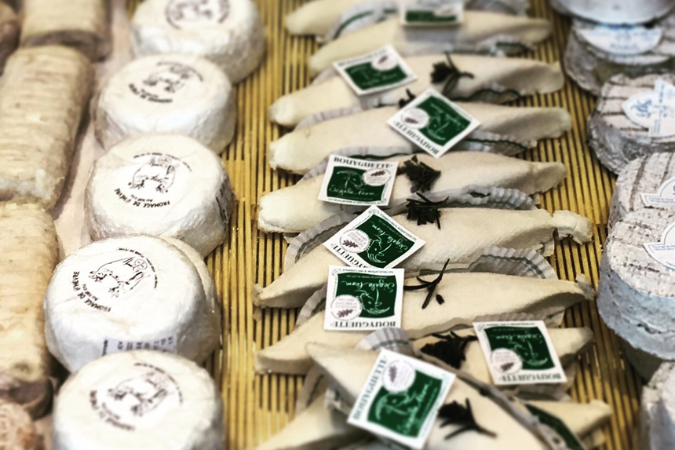
Food & Wine
GASTRONOMY
Food and wine are exceptional highlights of this trip. Breakfast will be provided at your hotel. Once you’re on the trail, it’s common to find a boulangerie or patisserie for pastries and coffee. A fresh baguette with cheese, sausage or paté and a tomato makes a great picnic lunch. Items can be bought from the fromageries and other stores along the route. In the early evening, enjoy an apéritif in an atmospheric village square then sample the abundant local wines and rich and varied cuisine for which France is famous, including delicacies like black truffles and the irresistible Rocamadour cheese.
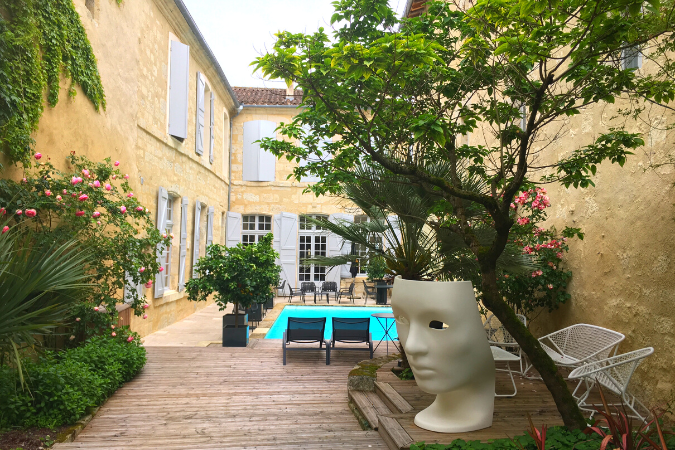
ACCOMMODATION
WHERE YOU STAY
Memorable accommodation is a hallmark of our trips on Le Puy Camino. We have long-standing relationships with hoteliers and have hand-selected the most beautiful, unique and character-filled properties on the trail and in the surrounding villages. We want you to enjoy each overnight stay as much as the walking. Our hosts enjoy sharing their knowledge of the local area and history and are accustomed to welcoming RAW Travellers into their establishments.
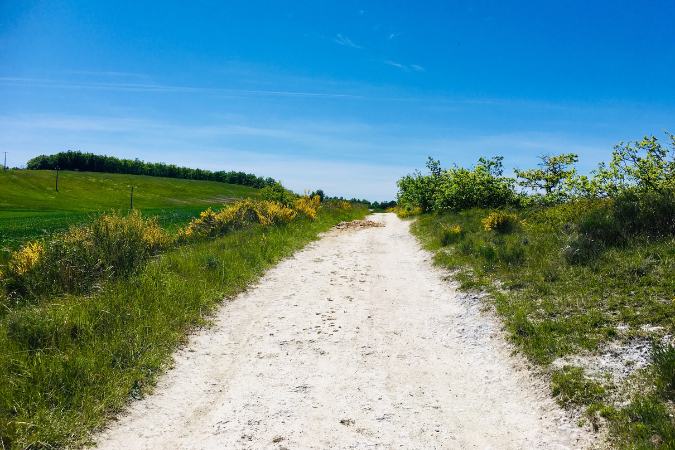
On the trail
TERRAIN UNDERFOOT
The Le Puy route is a picturesque trail through rural south-west France. It’s dotted with tiny hamlets, isolated farmsteads and intact medieval villages. It takes on average 5 weeks to walk the full 750km. The terrain is varied, sometimes strenuous and rarely flat, especially in the beginning. At times, there are descents and ascents from river valleys. Some sections are on single-track paths that can often be rocky in places, sometimes with steps but mostly just bare earth. Gravel forest roads, walking tracks and unsealed roads are common. Many of the long paths are dotted with crosses and chapels, which make good rest stops.
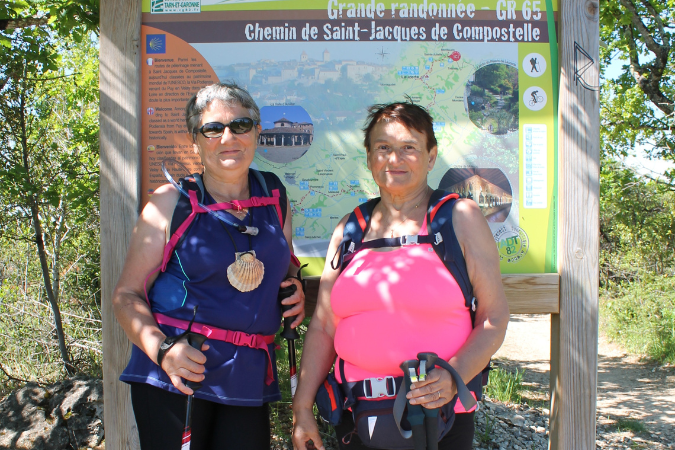
Camaraderie
A QUIETER CAMINO
Experience the solitude of this quieter Camino and the camaraderie of the predominantly French walkers. The Le Puy route has far fewer walkers that you’d encounter on the Camino Francés through Spain. You’ll have days with only three or four other people in sight. The overwhelming majority of walkers on this route are French nationals who do a week or two on the route each year. They are effortlessly friendly and helpful. To enhance your time on the trail, we recommend you invest some time learning some basic conversational French.
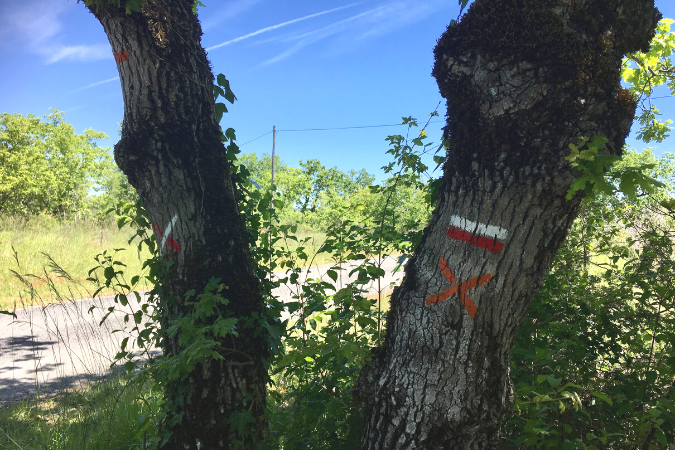
NAVIGATION
FIND YOUR WAY
The trail is very well-marked with the frequent horizontal red-and-white stripes of the French Grande Randonée network. ‘Wrong direction’ signs (red-and-white crosses) are nailed to trees or painted on rocks. To help you navigate easily, we’ll provide you with our exclusive RAW Travel walking app. Your unique route map will show your location in real-time without any internet connection needed. The app also has a host of other great features, including points and places of interest on the trail, accommodation details, weather forecasts and safety information.
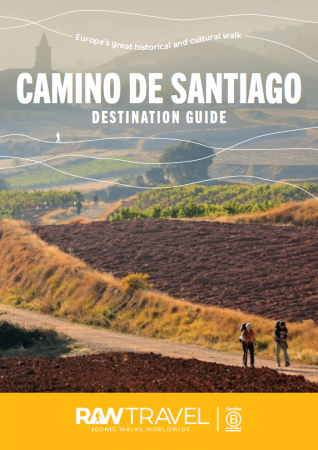
Exclusive Guide
Le Puy Camino
Discover inspiration, travel essentials, practical information and more in our free Destination Guide. All you need to know about walking the Camino de Santiago routes through Spain, Portugal and France!
Walking the Camino is an incredible journey that will immerse you not only in Europe’s grand history, food and culture but most importantly the extraordinary camaraderie that exists along these routes. The spirit of the Camino de Santiago is alive and well among people from all over the world. It is a ‘bucket list’ experience you will never forget!
FAQs
The Full Le Puy Camino
The Le Puy Camino route is 730 km. It begins in the pilgrim town of Le-Puy-en-Velay in Auvergne in Central France and finishes in Saint-Jean-Pied-de-Port at the foothills of the Pyrenees where it merges with the Camino Francés (the most popular of all the Camino routes). It’s best to allow 40 days (including rest days) to walk the trail in its entirety. If you have less time, you can easily walk a shorter section.
View all our walks on Le Puy.
Le Puy is rated as one of the very best walks in France with good reason. The route winds its way through an impressive list of stunning villages and towns including medieval Conques, St Come D’olt, Estaing, Espalion and Moissac. The landscapes are ever-changing, from the volcanic terrain of the Velay, the high plateau of the Aubrec, the rich agricultural lands of the Lot, limestone river valleys of the Quercy, the rolling hills of Gascony and the beautiful vineyards of Armagnac. If you want to explore the French countryside, you’ll not find a finer trip.
If you’re curious about what makes Le Puy a great choice, read this Holy Hiking about one traveller’s 16-day 350km adventure with us, walking from Le Puy-en-Velay to Cahors.
Also read: The myths and legends of Le Puy Camino
The walking season on Le Puy Camino is from mid-April until the end of October, with May and September being the best months. July and August experience much higher temperatures in the height of summer.
We pre-book all your accommodation on this trip. We have long-standing relationships with hoteliers and have hand-selected the most beautiful, unique and character-filled properties on the trail and in the surrounding villages. We want you to enjoy each overnight stay as much as the walking. Our hosts enjoy sharing their knowledge of the local area and history and are accustomed to welcoming RAW Travellers into their establishments.
You can read more about the accommodation here: Le Puy Camino: A taste of pilgrim life in rural France
Good quality hiking gear is essential for a safe, enjoyable and successful hiking experience. Sturdy walking boots with full ankle support are recommended for hiking in France on Le Puy Camino. Make sure your footwear is well worn in and comfortable and you have good quality hiking socks. Choose clothes that will shield you against varying weather conditions and temperature changes. Moisture-wicking, quick-drying, insulating layers and waterproof outer layers are best.
The terrain on the Le Puy Camino route is varied, strenuous and rarely flat, especially in the beginning stages. It is more challenging than Spain’s Camino Francés. At times, there are descents and ascents from river valleys. Some sections are on single-track paths that can often be rocky in places, sometimes with steps but mostly just bare earth. Tracks are also common: gravel forest roads, walking tracks and unsealed roads. There are some sections of country lanes, and coming into the towns and cities you follow regular footpaths.
Yes! We take care of all the details, including luggage transfers so that you can relax and enjoy your walk through France knowing that you have a secure booking each night with your bags waiting.
You are unlikely to see many cyclists on this route as the terrain is rarely flat and quite challenging in places. You’re more likely to find cyclists on Spain’s Camino Frances and the Portuguese Coastal Camino.
The Le Puy Camino trail is very well-marked with frequent horizontal red-and-white stripes of the French Grande Randonée network. ‘Wrong direction’ signs (red-and-white crosses) are nailed to trees or painted on rocks. Our bespoke walking app will help you navigate easily on the trail. All the information will be unique to your booking so you can hike with peace of mind.
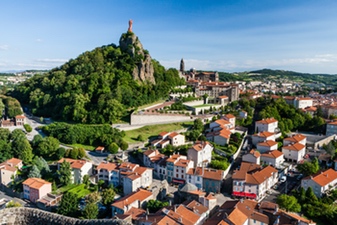
Le Puy Camino (France)
The Cahors Trip: Le Puy Camino
- Charming villages with rich historical and architectural heritage
- Peaceful walking through woodlands, moors of heather, limestone plateaus and verdant farmland
- The mythic Aubrac high plateau with its wildflowers and grazing cows
- Medieval Cahors – famous for its gastronomy and legendary Valentré bridge
$3,950.00
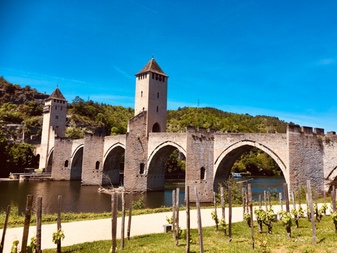
Le Puy Camino (France)
The Slow Walk – Cahors to Condom
- Shorter daily distances and ample time to relax in the village squares
- Tranquil country paths and beautiful trails
- Picture-postcard rural scenery and a wealth of gastronomic experiences
- Impressive architecture and historic UNESCO world heritage sites
$2,720.00

Le Puy Camino (France)
The Conques Trip: Le Puy Camino
- A beautiful 200km walk across the Central Massif of France
- Ever-changing cultures, gastronomy and dialects
- Espalion’s 16th-century Veiux Palace and 11th century Pont Veiux
- The beautiful medieval Romanesque abbey and hidden village of Conques
$2,550.00

Camino de Santiago
The Camino Stage 5. Sarria to Santiago: 11 days
- Walk the final 100km of the Camino Trail
- Qualify for your Compostela
- Finish in this historic city of Santiago
- Visit the final end point of your walk at the Cathedral
$1,890.00
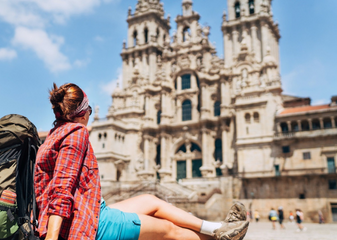
Camino de Santiago
Madrid to Santiago – Camino
- Begin your journey in the exciting city of Madrid
- Free time to explore Spain’s exciting capital
- Walk the final 100km of the Camino Trail; qualify for your Compostela
- Finish in the historic city Santiago; visit the final end point at the Cathedral
$2,430.00
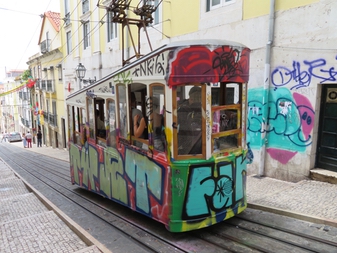
Portuguese Coastal Camino
Lisbon to Santiago – Portuguese Coastal Camino
- Explore Lisbon’s abundant history, fine cuisine and lively culture
- Fresh cod and grilled sardines the world famous ‘Pastéis de Nata’
- Lush fields, olive and citrus groves, beautiful beaches and wild coastlines
- Roman remains, old Knights Templar towns, Moorish bastions
$6,450.00
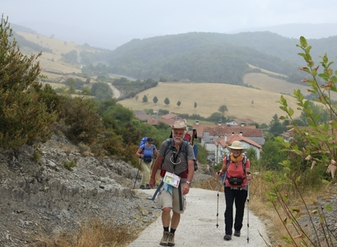
Camino de Santiago
The Full Camino
- Self-guided walking trip; set your own pace
- Enjoy Spain’s rich legacy of history, culture, food and art
- Ideal for single travellers who like the details of their trip well planned
- Country roads, forest tracks over old villages, cities born from the Camino trail
$6,390.00

Camino de Santiago
Camino de Finisterre – Camino
- A quieter less visited section that literally finishes at the water’s edge
- Enjoy great seafood and local wine while resting in Finisterre
- Quiet woodland paths past Galician horreos and remote moors
- Finisterre was considered to be the “End of the World”
$950.00
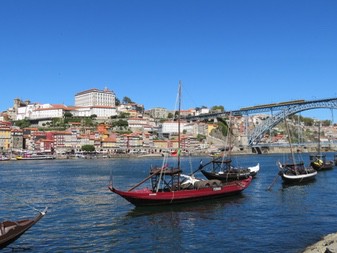
Portuguese Coastal Camino
Porto to Santiago – Portuguese Coastal Camino
- Savour the slower pace of this much quieter Camino
- Memorable encounters with friendly locals along the way
- Rest or explore with a free day in Porto, a vibrant and fascinating riverside city
- Make an optional visit to Tui or a day trip to the Cies Islands
$3,550.00
TRIP date selection
when would you like to travel?
Please select your preferred dates for on-demand trips or select a scheduled date for group departures. If you have booked a self-guided trip please understand that because your trip date is on demand and we must check availability of all properties on your chosen dates before it can be fully confirmed

